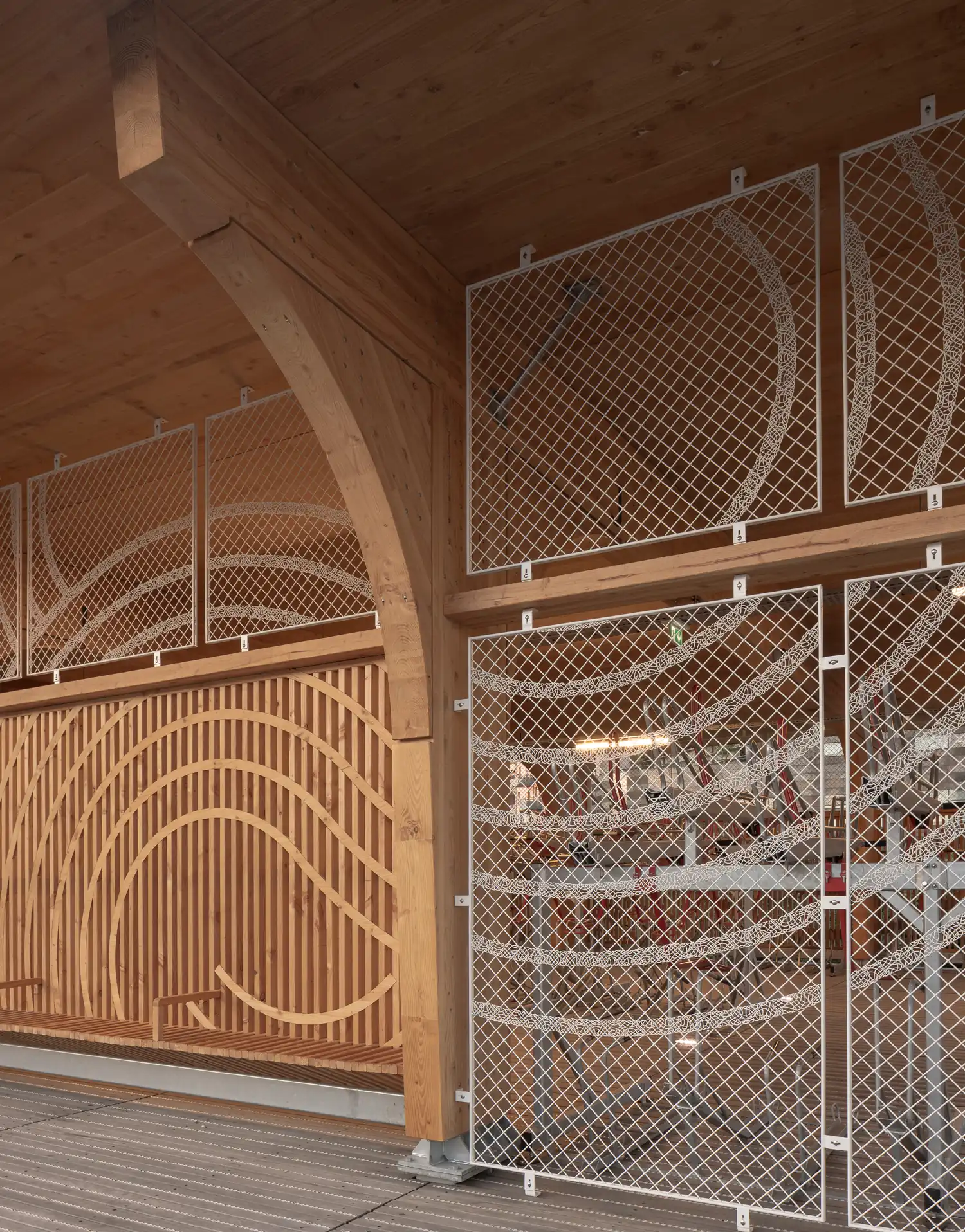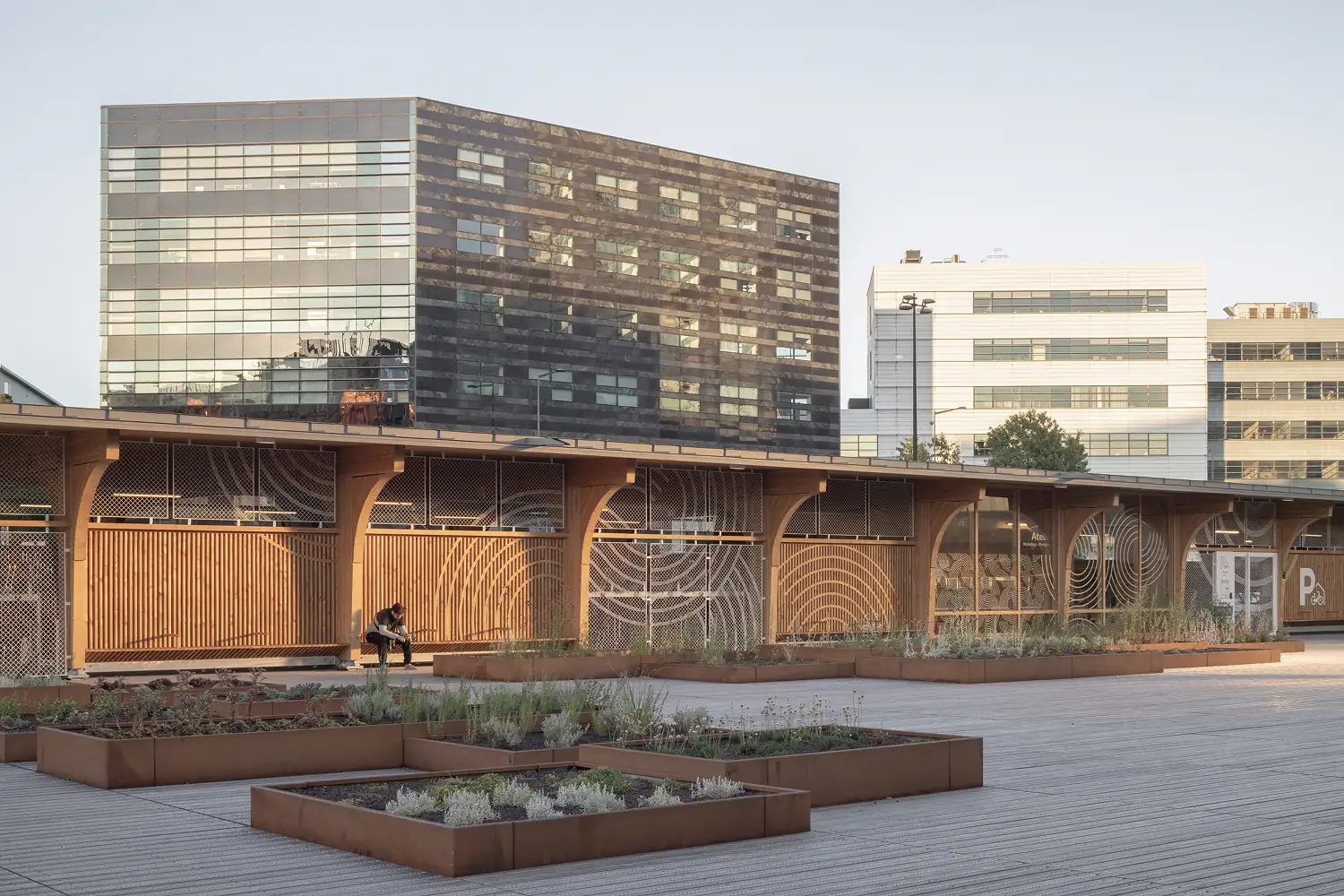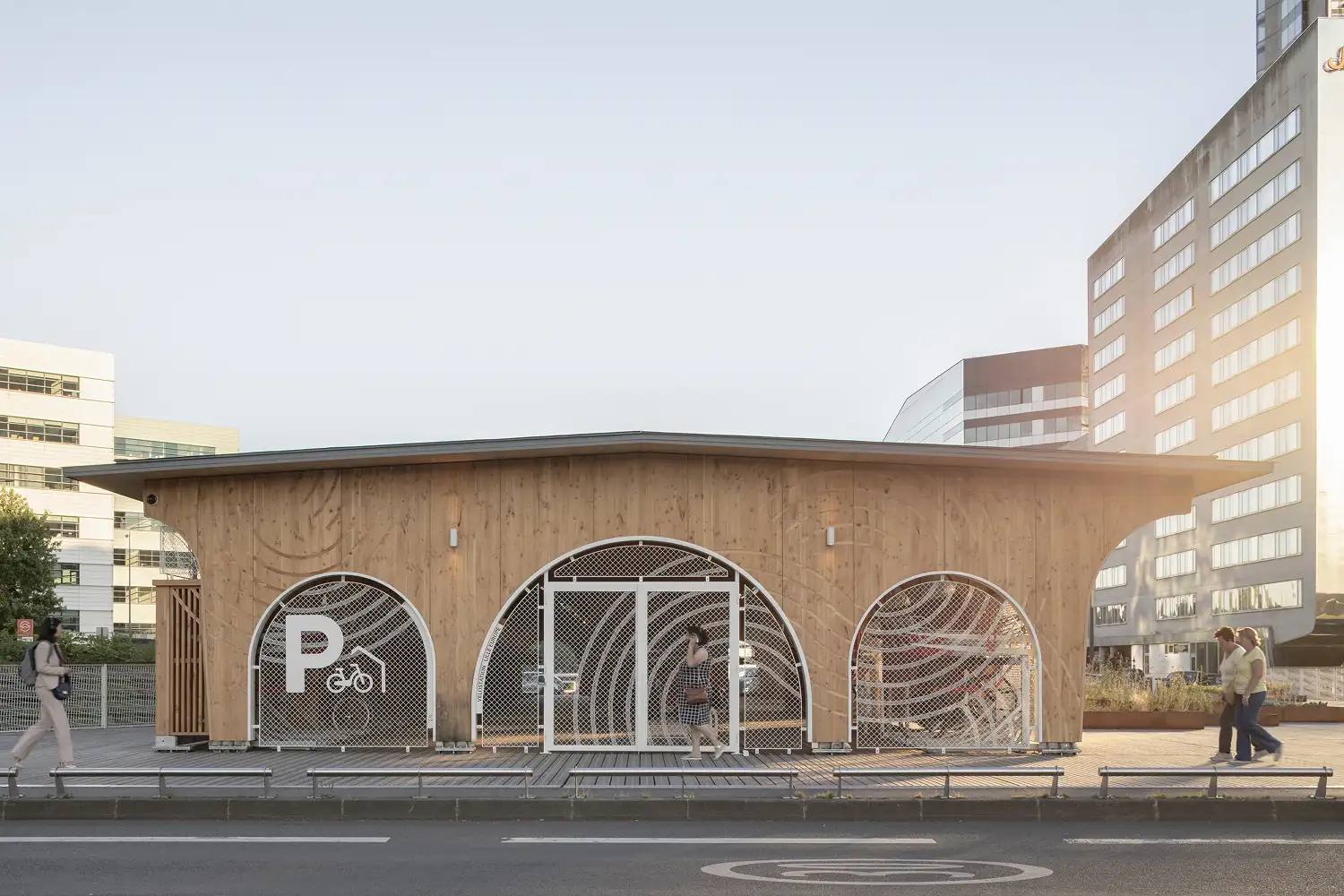© Redfort 2025. All Rights Reserved.
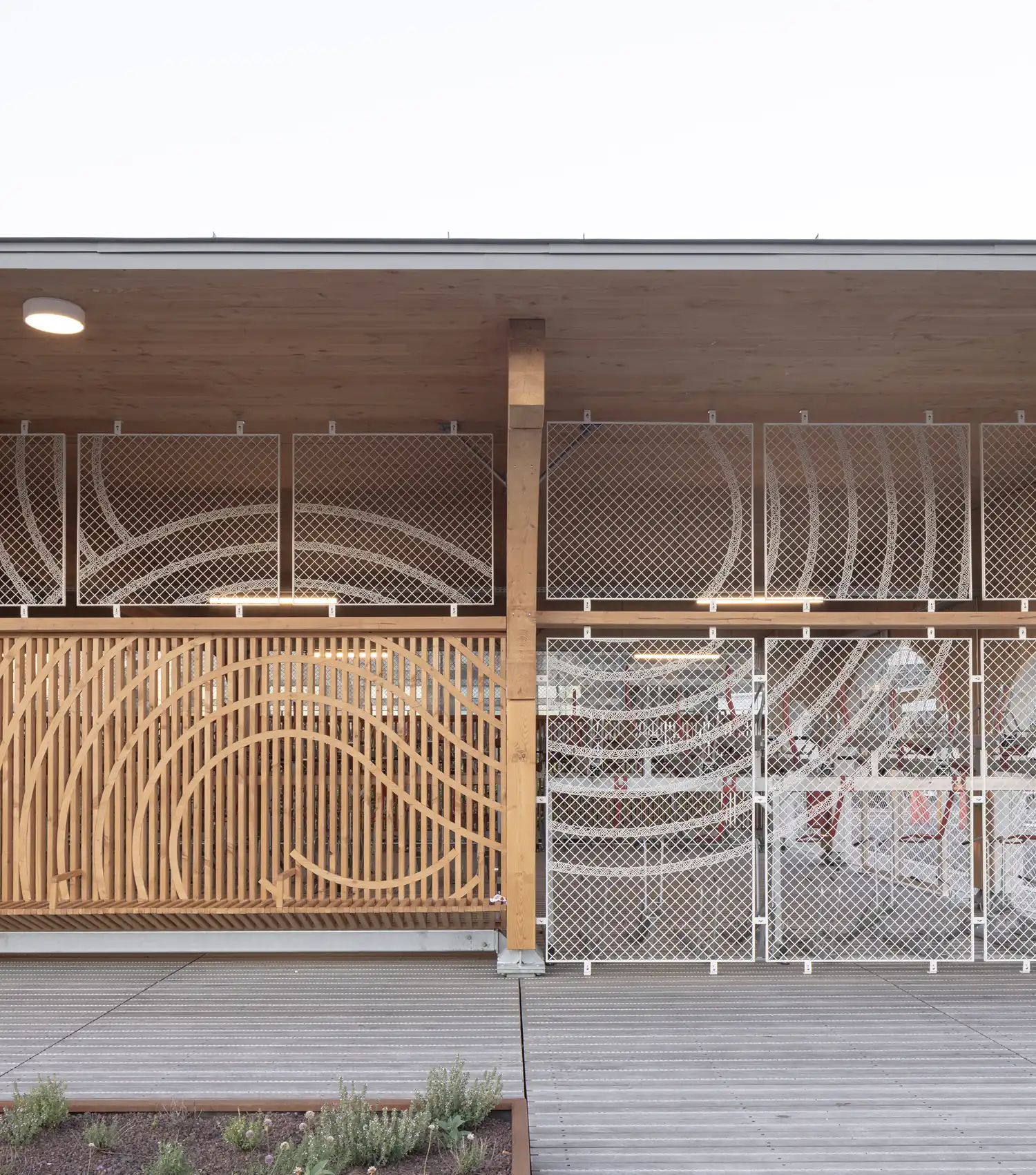
#
AMA
Bicycle hub blends mobility and urban design
Lalace
-
Facade
-
Public
It started as a simple program and grew into a complex project: a bicycle station with a wooden structure, clad in wood and metal, and topped with a green roof. Located at the intersection of train stations, public transport and the ring road, it reconnects slow, active mobility with a dense urban network. By emphasizing pedestrians and soft traffic flows within a car- and train-dominated environment, the project restores balance and redefines the role of human-scale movement in the city.
Partners: atelier ma, Agence Philippe Thomas, Edwood, Moduo, Kevin Faroux, Abriplus, Soprema, Urban Square, VéloStation (450 bicycles)
Developer:
Architect:
Photographer:
Nicolas da Silva Lucas
Artist:
Applications
Industries
Where function meets imagination
Challenge
The city needed a way to encourage cycling and walking in an area overwhelmed by cars and trains. The initial challenge was to create a bicycle parking and transit facility that could handle heavy use while integrating into the urban landscape. The solution had to address congestion, sustainability, and community needs all at once.
Solution
Redfort collaborated on a design that expanded a simple bike parking program into a multi-functional bicycle station. The structure features sustainable materials, like wood cladding and a vegetated green roof, to blend with the environment. It provides safe, covered parking for 450 bicycles and includes amenities that encourage cycling. By positioning the station at a transit crossroads, it links different transport modes and prioritizes pedestrian and bike flows through thoughtful urban design.
Product
The completed bicycle station is a landmark in active mobility infrastructure. Redfort’s contribution includes custom facade screens (using the Lalace product) that provide both ventilation and visual identity. The wooden and metal elements, combined with the lace-like metal facades, create an inviting yet functional enclosure. The product effectively showcases how architectural fabrics and smart design can transform a transit facility into an attractive public space, ultimately promoting greener transportation habits.
You may also be interested in

Explore related project
AMS
Room divider
|
Hospitality

Explore related project
INK
Room divider
|
Infrastructure

Explore related project
SHO
Ceiling
|
Retail

Explore related project
NLA
Enclosure
|
Sport

Explore related project
OMM
Wall
|
Hospitality
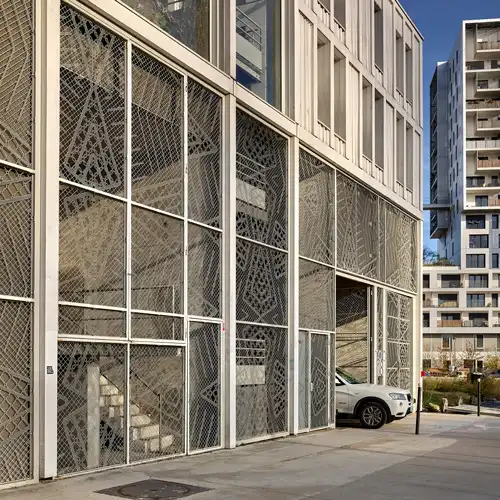
Explore related project
VSA
Enclosure
|
Public
